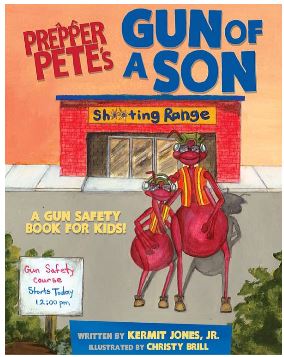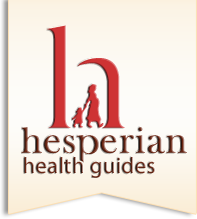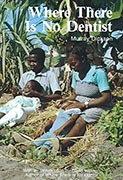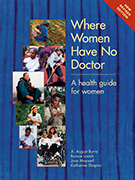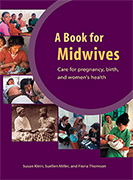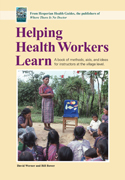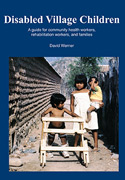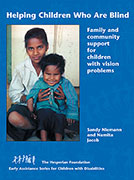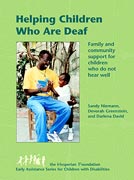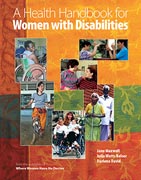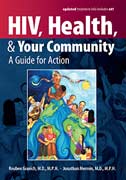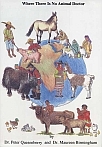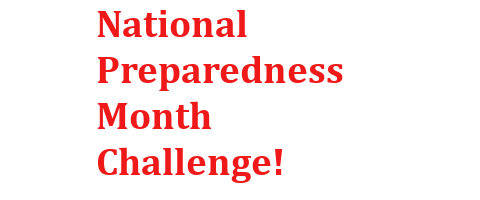
In our last Q/A session, North Korea was one of the leading topics in the news. I want to thank AlertsUSA for taking the time to answer these questions. Due to circumstances beyond our control there was a little delay, but the information is still very relevant. I also wanted to let everyone know that AlertsUSA offers $20 their yearly membership to Preparedness Club members. That one benefit pays for half of the yearly Preparedness Club membership alone.
Attacks by islmists
Chris: Since 9/11, we have seen multiple jihadi’s calling for attacks on American soil, yet there have only been a few successful lone wolf style attacks. What are the chances that they saw how we chased the Taliban and the terrorist camps out of Afghanistan and Al-Qaida out of Iraq, and now know that if they don’t hurt us worse than before, we’ll roust them from the countries that they are based in?
What are the chances that our enemies are waiting for something big enough to hurt us bad enough for us to not be able to respond?
AlertsUSA: While there have only been a few successful domestic attacks since 9/11, this is not for lack of trying. As we have written about within our Threat Journal newsletter on multiple occasions, a casual conversation with any federal law enforcement official or member of the special operations community, if directly asked, will reveal there are a constant stream of individuals, organizations and foreign states attempting to do harm to this country as well as our citizens and interests abroad.
As an example, a major counter-terrorism operation was undertaken within the last few weeks in SE Michigan (home to the nations’ largest mosque) and several other locations across the country in order to roll up an active, very serious plot. No, you will not find links to media reports about the operation. It was all done quickly and quietly by specialized CT professionals with no fanfare.
Why are these incidents not shared with the public? There are a multitude of reasons. On one hand, there are few tactical or strategic benefits and it may actually hurt other ongoing efforts by revealing sources and methods. There are also few benefits to having such operations dissected by media organizations and political opportunists. The real professionals don’t want the publicity. There is also a very real concern that if the true tempo and nature of such threats were publicized it would likely result in significant backlash against specific religious / ethnic groups.
In the end, while a majority of Americans have become complacent thinking that terror organizations have stopped trying, or are holding back, or that all terror threats are sprouted by the U.S. government to keep the “sheeple” scared, the truth of the matter is that these attempts happen regularly.
Chris: We’re all aware of ISIS and the way they are slaughtering Christians in the Middle East. Today, FOX News reported this:
“A senior Homeland Security (DHS) official confirmed to Congress on Wednesday that militants associated with the Islamic State of Iraq and the Levant (ISIL or ISIS) are planning to enter the United States via the porous southern border.”
I think ISIS would obviously love to launch attacks here on the US mainland, but how much of a threat do you think it is? Secondly, do you know how seriously government is or isn’t taking it?
AlertsUSA: The threat is very real and we know from first hand experience and regular interaction with those at the pointed end of the spear that the U.S. government is taking it very seriously.
Here again, while CT professionals prefer to operate outside of the spotlight and not have their actions dissected by media organizations and political opportunists, there are a growing number of U.S. citizens whom have traveled abroad over the last few years to join the jihad and are now returning home. Then there are the literally thousands of Muslims who are citizens of European Union countries whom have done the same. And as citizens of the EU enjoy visa-free travel to the U.S., this only amplifies the threat. Then add to this those Americans who are not inclined to travel abroad, but are nonetheless similarly motivated.
The threat is very real, as can be seen with the recent beheading in of a woman in Oklahoma who refused to convert to Islam. More is coming.
Additional note from Chris. It would seem AlertsUSA is of course correct, the most recent attack by an islamist occurred in Canada. I would also point out that the beheading in Oklahoma is the first killing of that type, but there have been several lone wolf Islamic attacks in recent years.
Russia
Chris: The cold war may have ended, but Russia has never stopped its saber rattling. I remember in 1991, while on board the USS Abraham Lincoln Air-Craft Carrier, the Russian Bear were flying into our air space and F18s were being scrambled to intercept them. With all of the Russian advances on Ukraine, the US and NATO response, they have stepped up the saber rattling to a level not many are aware of. The Business Insider.com recently said in an article titled “Russian Strategic Bombers Near Canada Practice Cruise Missile Strikes on US “that at least 16 bomber incursions by the bear occurred in just 10 days recently.
“Northern Command has confirmed that Russian strategic bomber flights increased sharply over the past six months.”
Last month, at least 16 bomber incursions by the Russians took place within the northwestern U.S. and Canadian air defense zones over a period 10 days. It was the largest number of incursions since the end of the Cold War. U.S. fighter jets intercepted the Russian aircraft and followed them until they exited the defense zone. The Tu-95 is a nuclear-capable bomber that is outfitted with six AS-15 nuclear-armed cruise missiles. The missiles have a range of over 1,800 miles.”
AlertsUSA: We all believe that Russia is just saber rattling, but Russia is not North Korea, and Putin is not Kim Jung Un. Russia has the capability to deal a knockout blow several times over. With the way they are flying these mock attacks, they could fly several Tu-95s and launch a hundred nukes before we were even aware they were headed our way.
I try not to delve into prophecy often, but those familiar with Ezekiel 39 will know that Russia, or Magog, will lead many of the world’s forces in an attack against Israel. I have said before that I believe for this to happen, something will need to happen to remove America as Israel’s protector.
All that being said, what are your thoughts on Russia, their threat to the US, and their threat to the countries that were a part of the former USSR?
This is complicated, but important.
YES, Russia does pose a threat to the U.S. and NATO.
BUT, the actions of the U.S. and NATO also pose a strategic threat to Russia.
Example: The proposed missile shield the U.S. has been attempting to get placed in the Baltic States is not for protection of Europe from missiles fired from nations such as Iran. It is intended to be able to take out Russian strategic rockets during the boost phase. Russia knows this and has publicly threatened to preemptively strike any such installations.
Example: U.S. meddling in Ukrainian politics poses another strategic threat to Russia.
Consider the following:
In December last year, Asst. Secretary of State for Europe, Victoria Nuland, delivered a presentation in front of National Press Club during which she revealed that the U.S. government has invested more than 5 BILLION dollars in helping destabilize the pro-Russian Ukrainian government and to develop “democratic institutions and a good form of government,” all in an effort to bring about Ukraine’s entry into the EU, and ultimately, NATO.
Next, consider the geography of the region. Looking at a map you will see that the Black Sea is Western Russia’s singular warm-water access point. All other ports in the North of the country, with the exception of Murmansk near the northeast corner of Finland, are blocked by ice at least 6 months out of each year. The only reason Murmansk remains ice free is due to the warm waters of the N. Atlantic current. Although 9 time zones in size, more than 90% of Russia’s population lives in the Western third of the country. If Crimea, and thus access to the Black Sea, were to end up in NATO hands, Russia would lose access to the world’s oceans for at least half of the year. This is a huge strategic threat to their defenses, to international trade and more.
Next, the Russian Navy has kept its Black Sea Fleet stationed at a naval base on the Crimean peninsula since the late 1700s and the time of Napoleon. The Port of Sevastopol has a large, deep, defensible harbor and is accessible in all seasons. In 2010, Russia negotiated an agreement with Ukraine that allows use of the strategically located Sevastopol naval base through 2042 in exchange for discounts on natural gas.
Ukraine becoming a NATO member would eliminate their ability to use this base, which is critical for their access to the world’s oceans.
Finally, playing “follow the money” it should not be surprising that Ukraine is a critical corridor for oil and gas pipelines from Russia and the Caspian region into Europe. These pipelines and the product they carry generate huge profits (hundreds of billions) annually for the Russian government. To have Ukraine come under Western influence and potentially join NATO would put that Russian state revenue stream at risk. Hence, another strategic threat.
With just these few items (there are many more), it is easy to see how Russia is being backed into a corner and forced to exert their power and to sabre rattle. Their strategic interests and national security are directly threatened.
And this is where the danger comes home.
Russian President Putin, Prime Minister Medvedev and the Chief of the Russian General Staff Gen. Nikolai Makarov, have on multiple occasions in the last 3 years made explicitly clear that Russia would use nuclear weapons, including in a preemptive capacity, if there is a threat to the integrity of the Russian Federation These scenarios include conventional attacks on Russia or it’s strategic partners, placement of missile shield installations in former Soviet-bloc countries and more.
Ebola
Chris: I have said in previous articles that I think the Ebola threat here in the USA is minimal. However, you recently had an alert that said:
“Air ambulance company used for Ebola evac flights admits moving “a lot” more cases to US than pub disclosed. State Dept. mum on details & treatment locations.”
AlertsUSA: While I still think the threat of it spreading like it has in Africa is lower here in US, this is more concerning. Do your sources have any other information on the extent of this practice?
In the time since your questions were originally posed, much has transpired.
While we have no further references to “secret” flights, take note that Judicial Watch, the conservative public watchdog group, says in a new report that the President is “actively formulating plans” to admit Ebola-infected non-citizens into the U.S. for treatment.
Other Threats?
Chris: What other threats should we be paying attention to that I haven’t covered?
AlertsUSA: In the end, I would say that while it is extremely easy for people to become complacent because it seems the U.S. rarely comes under attack or that nothing too bad ever happens, this is an extremely dangerous mindset. Particularly for those of us who profess to be Christians.
Just consider where we are as a Nation:
The dominant political party in America has adopted and ferociously defends the sins listed in Romans 1 as their national platform. Free birth control and the promotion of fornication, abortion on demand up to and including late term (murder), the widespread promotion of homosexuality and the codifying of homosexual marriage into Federal law (and the “hearty approval of those who practice it”), and on and on and on. All of this is a gross violation of God’s law.
With all of this and more happening on a national level, can anyone really think that we are a Nation under God’s blessing and protection? Hardly. Romans 1 is explicitly clear that God WILL judge nations which go down this line.
Pray, Prepare and Stay Aware.





 Mike Podlesny is the author of the book Vegetable Gardening for the Average Person as well as the creator of the Seeds of the Month Club where members receive non gmo, heirloom variety seeds every month. You can listen to Mike each week on the Vegetable Gardening Podcast where he interviews gardening industry experts.
Mike Podlesny is the author of the book Vegetable Gardening for the Average Person as well as the creator of the Seeds of the Month Club where members receive non gmo, heirloom variety seeds every month. You can listen to Mike each week on the Vegetable Gardening Podcast where he interviews gardening industry experts. 